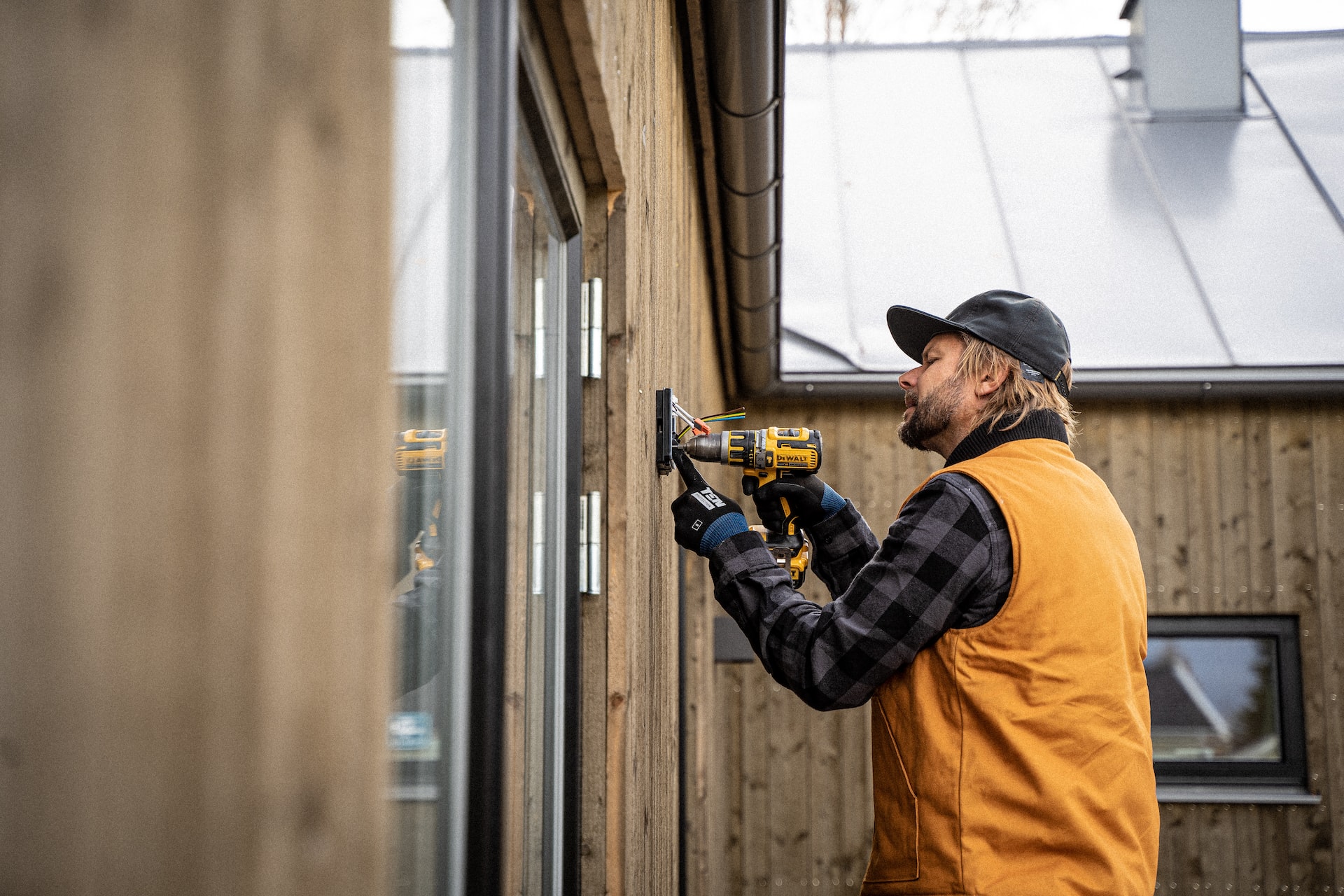Lifestyle
Top 10 Wearable Tech Fashion to Keep an Eye On

Trends change at a faster rate than you can imagine, and the wearable electronics fashion trend appears to have taken over the world as we enter 2022. So, what do you mean when you say “wearable tech fashion”? Is what you’re wearing technologically advanced?
You’re dressed in a technologically advanced manner?
In simple terms, there are just wearable tech gadgets—the only difference being that they are ultra-stylish—and occasionally, large fashion houses collaborate with technology behemoths to create something that is both technologically advanced and incredibly fashionable, and edgy!
We’ll go through the top ten wearable electronics fashion trends that will be huge in 2022 in this article. So, let’s get this party started!
Top Ten Wearable Electronics Fashion Trends
Charging Clothes
What if your clothes could charge your phone in the same way that your phone can? Wearable Solar, a startup business, has developed clothing and accessories that can power devices! This clothing, which is made of lightweight material, may assist the wearer to charge their phone to at least 50% if they spend at least an hour in the sun! Another start-up has created a bag that does the same thing!
Whiff Of Pure Air
What if you had your own personal air filter that looked like a bauble you could wear on your hand? Hand Tree, on the other hand, has developed an air purifier that can filter the air around you and recycle it back into the atmosphere. A refillable carbon filter, a rechargeable battery, and an organic light-emitting diode screen are all included in the purifier.
Stimulated By Surroundings
What if your clothes, too, adapt to their surroundings? Rainbow Winters has created apparel that can react to its surroundings and change its shape. For example, there is a type of holographic textile that can change its shape and start glowing as sound levels rise or fall.
Track Your Clothes
Never misplace another cloth in your closet, especially if you have a large one. Designer Asher Levine inserted a tracking chip in his wearables for one of the most recent fashion shows, and users could track them using the TrackR app.
Safety First
This helmet will actually aid cyclists who have had a lot of bad experiences with vehicles on the road. Adafruit has created a helmet with an integrated navigation system that employs lights that flash to the left or right to indicate where the rider should turn.
Dresses That Glow When You Look At Them!
Now that’s what I’m talking about when it comes to fashion! Ying Gao, a fashion designer, has created clothing that glows when looked at for a long period. The dresses also illuminate because the foundation layer of fabric is made up of glow-in-the-dark threads or is covered in a photo-luminescent thread.
Carry Your Sound
Rebecca Minkoff, a fashion designer, has created handbags that may be used to save your audio! Stella Speakers can fit inside these high-end purses with ease!
Smart Sock FTW!
Sensoria by Heapsylon is a smart sock that operates similarly to fitness bands but is considerably more comfortable to wear. Based on pressure signals from the wearer’s foot, the fitness sock, or smart sock as the creators name it, automatically recognizes the type and amount of activity.
Tracking Sports Bra
The Sports Bra contains a built-in tracker that can quickly track your heart rate. The Numetrix Sports Bra includes a small transmitter that attaches to the garment and monitors the user’s heart rate.
Light ‘em Up
The premium fashion business is buzzing with light and light-enhanced goods. Moon Berlin, a Berlin-based clothing business, uses LED lights to enhance the aesthetic of their products with the help of these.
Feel Comfortable
Here’s a strange question for you: how smart is your underwear? If you’re anything like me, the concept of wearing technology near your private parts makes you uneasy, but that’s precisely what a Canadian business wants us to do.
Apparel producer Myant presented Skiin, a platform for connected clothes, at a by-invite launch last week at Toronto’s MaRS Discovery District. What was their very first consumer product? Best underwear for men.
Until now, one of the most significant barriers to wearable technology adoption has been a lack of consistent use (it’s difficult to gain insight into biometrics and well-being when you stop using your wrist tracker after ten days). As a result, producers have shifted their focus to textiles as a viable alternative. While linked clothes may appear to be a straightforward alternative to bulky accessories, other issues such as washability and battery life arise.

Home Decor
How to Choose Strata Painting Services in London

London is home to countless high-rise apartments, office complexes, and historic buildings, all requiring regular upkeep to maintain their charm and durability. One crucial aspect of property maintenance is strata painting, which ensures interior and exterior shared spaces remain visually appealing and well-protected.
Unlike standard painting jobs, strata painting involves special coatings, weatherproofing, and compliance with strict safety regulations to meet the needs of multi-unit buildings.
With London’s frequent rainfall, pollution, and varying architectural styles, choosing a reliable strata painting service isn’t just about aesthetics—it’s about long-term protection and value preservation.
Whether it’s a modern glass-covered skyscraper in Canary Wharf or a centuries-old residential complex in Kensington, the right painting professionals can help enhance curb appeal while ensuring structural integrity.
What Does Mean By Strata Painting?

Strata Painting is a specialized painting service designed for multi-unit properties like apartment buildings, townhouses, and commercial complexes. It ensures that shared areas such as hallways, staircases, lobbies, and exteriors are well-maintained and protected against weather damage.
For instance, in central London, high-rise buildings often require weatherproof coatings to withstand frequent rain and pollution. In contrast, heritage buildings in Westminster may need specialized paints to preserve their original look while complying with heritage protection laws. This makes strata painting essential for maintaining property aesthetics, longevity, and value.
Key Factors of Choosing Strata Painting Services in London

1. Use of Drones for Building Inspections Before Painting
Drones have revolutionized building inspections by providing aerial views of high-rise strata properties, allowing for detailed assessments of structural damage, peeling paint, and moisture penetration. This reduces the need for scaffolding-based manual inspections, cutting costs and improving safety. According to a 2023 study, over 40% of London’s property management firms have integrated drone inspections for maintenance planning, proving its growing popularity in the industry.
2. Use of Biodegradable and Non-Toxic Paints
With stricter UK environmental regulations, London-based strata painting companies are shifting towards biodegradable, non-toxic, and low-VOC (Volatile Organic Compound) paints. These eco-friendly options improve indoor air quality while minimizing harmful chemical emissions. Reports indicate that over 60% of newly developed residential buildings in London now use low-VOC paints to meet sustainability standards.
3. Green Certifications for Environmentally Responsible Contractors
Many strata painting contractors in London seek BREEAM (Building Research Establishment Environmental Assessment Method) and LEED (Leadership in Energy and Environmental Design) certifications to showcase their commitment to sustainability. Buildings with BREEAM-certified painting solutions have been shown to reduce energy consumption by up to 25% annually, making them an attractive option for property developers and management companies.
4. Self-Cleaning and Heat-Reflective Coatings
With London’s variable climate, self-cleaning coatings have gained traction due to their ability to reduce dirt accumulation and grime buildup on painted surfaces. These coatings, often made with titanium dioxide-based formulas, break down organic dirt through photocatalysis. Similarly, heat-reflective coatings help reduce indoor cooling costs in London’s commercial buildings by reflecting UV rays. Studies indicate that heat-reflective paints can lower interior temperatures by up to 5°C, cutting energy expenses by 15-20% annually.
5. 3D Visualization Tools for Previewing Color Schemes
Choosing the right color scheme is a crucial decision in strata painting. 3D visualization tools allow property owners, managers, and residents to preview multiple color options and finish in real-time before painting begins. These tools, widely used by top painting contractors in London, help reduce color mismatches, improve client satisfaction, and streamline the decision-making process.
6. Automated Painting Equipment
Automation is transforming the strata painting industry by improving efficiency, safety, and consistency. High-rise buildings in London are increasingly adopting robotic painting systems that use precision-controlled spray mechanisms to coat large surfaces evenly. These systems reduce labor costs by up to 30% and enhance safety by minimizing human exposure to hazardous heights and harsh weather conditions.
7. Integration of Solar-Reflective Coatings to Reduce Energy Consumption
Solar-reflective coatings are gaining popularity in London’s high-rise and commercial strata projects. These coatings are designed to reflect UV radiation, preventing excessive heat absorption and reducing the reliance on air conditioning. Studies suggest that buildings treated with solar-reflective coatings can cut cooling costs by up to 20%, particularly in densely populated areas like Canary Wharf and Central London.
8. Smart Coatings with Antimicrobial Properties
Post-pandemic hygiene concerns have led to the widespread adoption of antimicrobial coatings in London’s residential and commercial strata properties. These advanced coatings inhibit bacterial and mold growth, making hallways, lobbies, and shared areas more hygienic. Popular in hospitals and commercial offices, these coatings are now being used in luxury residential complexes to improve indoor air quality and overall sanitation.
9. Water-Based Paints Instead of Oil-Based Solutions
Switching to water-based paints has significantly reduced pollution and carbon footprints in London’s painting industry. These paints dry faster, emit fewer chemicals, and are easier to clean up, making them a preferred choice for strata projects aiming to comply with environmental regulations. Data from the UK Green Building Council (UKGBC) indicates that over 70% of professional painting projects in London now use water-based coatings, marking a shift towards greener practices.
10. Recycling and Waste Reduction Initiatives
Many strata painting contractors now offer paint can recycling programs and waste reduction initiatives. Several London-based firms partner with recycling facilities to repurpose leftover paint, reducing landfill waste and promoting sustainability. This trend aligns with the UK government’s 2030 sustainability goals, pushing more companies to embrace eco-conscious disposal practices.
11. Automated Painting Equipment
Automation is transforming the strata painting industry by improving efficiency, safety, and consistency. High-rise buildings in London are increasingly adopting robotic painting systems that use precision-controlled spray mechanisms to coat large surfaces evenly. These systems reduce labor costs by up to 30% and enhance safety by minimizing human exposure to hazardous heights and harsh weather conditions.
Common Challenges for Strata Painters in London
- Weather conditions: London’s high humidity and frequent rain require special coatings. Unpredictable weather patterns can delay painting schedules and increase drying time, making it essential to choose weather-resistant paints.
- Regulatory compliance: Following UK Work at Height Regulations 2005 and health and safety laws is mandatory. Additional permits may be required for buildings located in heritage areas or conservation zones.
- Minimal disruption: Painters must work efficiently around residents and businesses. This means planning schedules to avoid peak hours, working in phases, and using quick-drying, low-odor paints to reduce inconvenience.
- Access restrictions: High-rise and multi-story buildings require specialized access techniques such as rope access, scaffolding, or hydraulic lifts. Ensuring compliance with safety regulations is critical for worker safety.
- Specialized Coatings and Compliance: Buildings in London may require fire-retardant coatings, anti-mold treatments, or UV-resistant paints to comply with building safety and environmental standards.
- Surface Preparations: Addressing existing cracks, leaks, or damaged surfaces before painting begins is vital for long-lasting results. This may involve power washing, applying primers, and fixing structural defects.
- Tenant Communication: Informing tenants about timelines and expected disruptions is key to maintaining a positive relationship. Property managers must provide clear notices regarding paint odors, restricted access areas, and safety precautions to ensure cooperation.
- Logistics and Scheduling: Coordinating painting schedules with property managers and tenants is crucial to prevent delays. Large-scale projects require meticulous project management to allocate labor and resources effectively.
- Budget Constraints: Strata painting projects often operate on tight budgets. Proper cost estimation, avoiding hidden fees, and choosing cost-effective yet durable paint solutions can help balance quality and affordability.
Home Decor
Choosing and Fitting out your new Retail Location

For many small businesses, opening a retail location is a dream come true. It can however be a very stressful experience, with so much to consider and organize.
Customers prefer their shopping experience when the shop is well-designed and maintained. If they are satisfied with their experience, they will be more likely to make purchases, stay for longer and also return. Therefore, getting it right is very important. It is also useful to have a good shop layout and plan in case you ever open other stores, as it will make the process a lot quicker and easier.
Planning your strategy for shop fitting will make your life a lot easier, saving both time and money. Establishing a schedule is really helpful as you can better understand when you want things done and estimate a date of when the shop will be ready to open. Establishing a budget will give you an idea of how much you can spend on certain areas and where you may need to try to save money. A shop fitting expert will be able to advise you on any aspects of the process, or complete the whole job if you want!
1. Plan your space before fitting out your shop
You must first consider the type of shopping experience you want to provide. Think about how you want your customers to view the store and how you can ensure they see the right things. Well-designed areas can encourage customers to see all they need to and even to stay in the shop longer.
When it comes to layout, you must think carefully. Research has found the majority of customers turn right when they first walk into the shop. Therefore it may be useful to strategically place your most enticing offers and displays in these areas.
Functionality is the top priority. Usability is just as, sometimes even more important within retail spaces than aesthetic factors. You must keep in mind the room’s key purposes, and what the customers’ motivations will be when entering the shop.
Lighting is another important aspect to consider when designing your shop. Different tones of lighting can be used to give the store more or less color, and enhance the products on sale. Ambient lighting can be used for a softer look, or spotlights can be used for maximum brightness. Play around with different types to see what best fits your brand and your space.
2. Decide on your budget
Do some research to get a sense of what this would cost and use this information to create a reasonable budget. Decide on what your priorities will be, and allocate more budget to them if needed. This might take a bit of time to research but it will be worth it to ensure you have a clear view of the costs involved. It will also ensure you don’t get overcharged for any products or services.
3. Hire a shop fitting specialist
A shop fitting expert will have the knowledge and experience to understand how your shop can work and look best. They will have a unique view of how it can be designed and will ultimately ensure your shop has the best layout possible. They also will have a large network of contacts within the industry so will be able to use top-quality services and suppliers and they will have good prices negotiated with them. They will also have an understanding of health and safety issues, so they will ensure the shop complies with safety regulations. For example, they will be able to quickly see if there are any potential trip hazards or fire dangers and advise what to do to solve the issue.
You could consider contacting a local carpenter who can help with shelving and other fittings at a more reasonable rate if you are not able to afford a shop fitter. You will also need to hire a skilled electrician for electrical installations. Choosing one that has experience in shop fitting electrical installation would be the best option.
4. Purchase furnishings and fixtures
You will need to buy shelving systems, display stands, islands, or railings to organize your shop. Investing in good quality fixtures may help you out in the long run. You will also want some simple shelving for storing cupboards and back-of-house storage, and a counter for payments. Consider how much stock you want to be on show and how it can be best displayed. For example, a boutique clothing store may want fewer items on the shop floor but nicely displayed, whereas a discount store will have lots of stock tightly packed in. Measure everything accurately, especially when ordering online, to ensure everything will be the right fit.
Purchasing pre-owned equipment can help you save money. If you’re looking for secondhand retail equipment, check out websites like Gumtree, Preloved.co.uk, and eBay.
5. Purchase shop supplies
You will need to purchase a variety of other supplies needed for your shop. You may need a label maker to make price stickers or a tagging gun to attach price tags to your products. You may need additional point-of-sale labeling, signs, shelf labels, and promotional marketing materials. You will need a till, an electric point-of-sale system for processing payments at the point of sale. When it comes to payments, it is good to be able to accept as many different options as possible to ensure you aren’t losing any customers. While a lot use contactless options nowadays, some customers do use cash so you must be able to cater to both.
A safe can also be useful to consider buying, as it can hold your shop’s proceeds safely. Consider purchasing CCTV cameras, particularly in blind spots to discourage shoplifters and provide your store with extra security. A burglary alarm may also be worth buying for when no one is in the shop. Ensure fire alarms and smoke detectors are in the right places and regularly test these.
Other essential services like rubbish collection, water, gas, electricity, internet, and insurance must all be taken into consideration. Again, it might be worth doing some research to find reasonably priced suppliers.
There is a lot you will need to organize and plan, so make sure you allocate yourself enough time to get it done. Spending a bit of extra time doing more research could help you save a lot of money and will ensure you get it done right.
Lifestyle
Best and Top-Rated British Handbag Brands in The UK

British handbag makers offer quality handmade purses you are bound to love. The best British handbags brands feature unique and creative designs that are adorable and stylish. You will discover that many UK handbag brands have a long history within the tannery industry.
The 8 best UK bag brands list has included a few newcomers that might catch your interest for their luxury quality and trendy designs.
Best 8 Handbag Brands in the United Kingdom
Alexander McQueen
There is always room for more branded bags, no matter how many women have. Because bags are the best accessory for women, the majority of them prefer to stand out at social gatherings. Well, if you want to stand out from the crowd, the Alexander McQueen bag collection is precisely what you need. Alexander McQueen was the former head designer of Givenchy until 2004 when he launched his own fashion house.
One of his signature designs is the characteristic knuckleduster closures (four rings) of clutches, which instantly identify a clutch as an Alexander McQueen work. The clutches’ edgy designs set the firm apart in the industry. Other purse styles that are included are shoulder bags, top handle classics, satchels, minis, totes, box purses, and crossbody handbags. The prices of these bags range from around $920 to $3,500.
Aspinal of London
Aspinal of London, founded in 2001, creates high-end leather items, notably women’s purses. The purse is a high-end line of contemporary designer handbags with a classic or vintage vibe. Signature styles, clutches, crossbodies, micro, mini, shoulder, totes, camera bags, satchel, hobo, top handle classic, frame, trinket, and hatbox are among the many handbag designs. The prices vary from $550 and $1,400.
Nature, power, and generosity are all represented by the Aspinal of London. Aspinal is regarded as being the highest-quality brand. The items are made to last so that they can be passed down through the generations. All of its products are handcrafted by talented artisans in some of the world’s most prestigious workshops.
Burberry
Burberry is known for its understated handbag designs that pay homage to classic trends. The purses are made of full grain calf leather, with tartan plaid canvas and other materials on some of them. Tote, small, crossbody, shoulder, half cube, and clutch bags are some of the most popular purse styles. The cost varies from $420 and $2,700.
Burberry is an excellent choice if you want a high-end handbag that stands out from the crowd. It’s a British label associated with royal fashion that costs less than other European labels. Burberry’s new Olympia bag is the ‘it’ bag at the moment. Blue topaz, marsh green, and marigold are the colors offered in the tiny size.
Hettie
Hettie handbags aren’t like other handbags. Totes, cross bodies, and grab bags are the three basic styles. The materials utilized in the purses are unusual. The majority of the handbags are made entirely of wool, with a handful wholly made of canvas. The bags have plaid patterns with a few polka dot designs. The costs vary from $180 and $230.
Premium quality fabric handbags, expertly handcrafted in England, using the finest British wool by the best bag designers. This timeless collection of British luxury handbags is available in a variety of popular Hettie pattern designs and is designed to last a lifetime. Take the landscape of the United Kingdom with you everywhere you go.
Hyde & Hare
Hyde & Hare is a luxurious British handbag designer UK. Its use of Italian cowhides and leather in the design is what sets it apart. Clutch, tote, and crossbody handbags are among the varieties available. The costs vary from $90 and $500. Not only do its superbly elegant, wonderfully designed, and economically priced products set it apart from the competition, but each of its bags is one-of-a-kind.
You will not be able to locate another one like them! Hyde & Hare is known for its dedication to innovation, design, and high-quality craftsmanship. They have facilitated every product with utmost precision, thought, attention to detail, and care.
JW Anderson
The Pierce and Puzzle handbags by JW Anderson are very prominent for their unique Gothic flair. Other handbags available from JW Anderson include the wedge bag and a whimsical canvas cap bag. Tote, punch, crossbody, and shoulder bags are among the most popular styles. The costs vary between $395 to $2,200. Please leave it to JW Anderson to draw inspiration from the most unlikely places and transform them into accessories that lie at the crossroads of art and fashion, blending them beautifully.
It became an arm candy for everyone, from fashion’s top influencers to Hollywood’s leading fashion fixtures. JW Anderson, the man himself, and the brand have become a point of reference for all those who are aware of the latest trends in handbags.
Radley
Radley Purses has a variety of leather and non-leather handbags to choose from. The pictured bag, with scenes created with leather appliques, is one of the most adorable designs. Crossbody, shoulder, tote, grab, hobo, clutch, bum bags, and pocket bags are just a few of the delicate quality leather bag varieties available. The costs vary between $105 and $375. Radley’s handbags are famous for their distinctive mascot, a Scottish terrier designed in the UK and manufactured in India.
Victoria Beckham
Victoria Beckham launched her fashion line in 2008, which included a few purses. A bucket bag, powder box bag, clutch, crossbody, and structured, compact purses are among the styles which symbolize a modern minimalism style. The costs vary between $475 to $2,100. Victoria Beckham has entered the handbag market with models created in Italy and available in fabric, leather, and the new VB emblem.
Despite the fact that Beckham has previously designed handbags, his previous offer was modest. People frequently use bags that suit every kind of outfit. The bags will be available worldwide through all of Victoria Beckham’s retail outlets and wholesale partners. Seasonally, the collection keeps on updating and it witnesses new inclusions of carryover styles with every update.
Conclusion
These handbag designers in the UK will not leave you disappointed if you were to purchase them. Women, you need to have at least one of these trendy handbags with you in today’s fashion world.
-

 Business3 years ago
Business3 years agoThe Most Efficient Ways To Use The Best 6 Business Keynote Presentations
-

 Apps and Software7 months ago
Apps and Software7 months agoStarbucks Partner Hours App Login Guide
-

 Entertainment7 months ago
Entertainment7 months ago15 Best IPTV Service Providers in the UK 2025
-

 Tech3 years ago
Tech3 years agoIs Forecasting A Part Of Data Science?
-

 Economy3 years ago
Economy3 years agoWhat does it mean to Dream About Pennies?
-

 Entertainment7 months ago
Entertainment7 months ago10 Best Free Video Player Apps For Apple TV
-

 Entertainment2 years ago
Entertainment2 years agoHow To Enhance Your Viewing with Video Subtitle Support
-

 Travel2 years ago
Travel2 years agoBenefits of UK Skilled Worker Visa for International Professionals



































